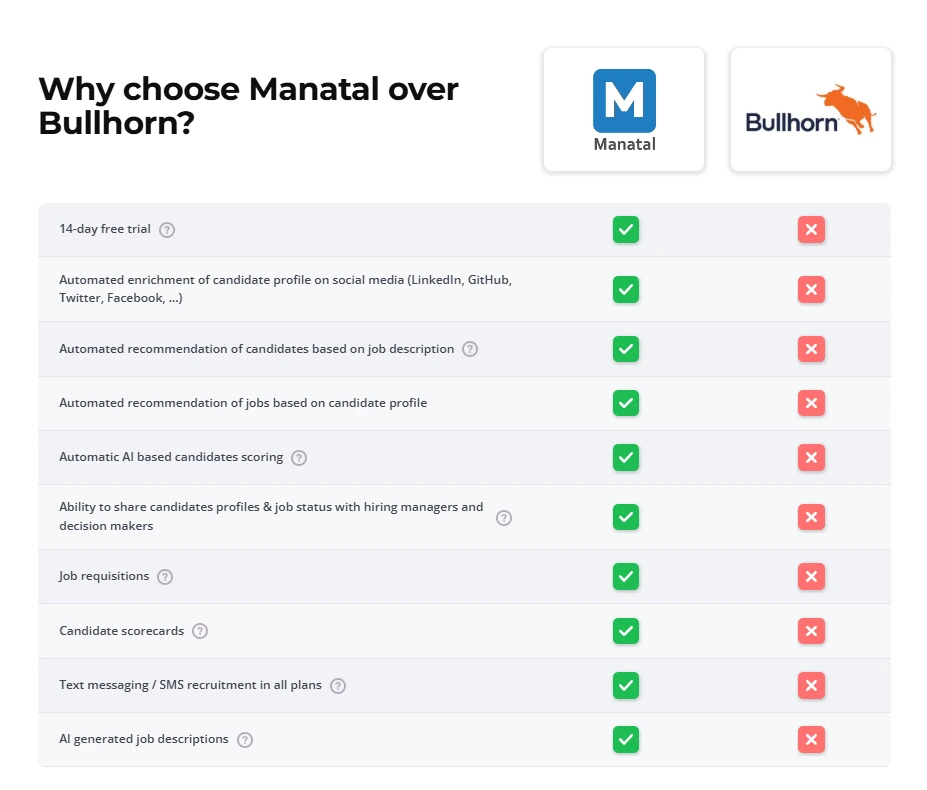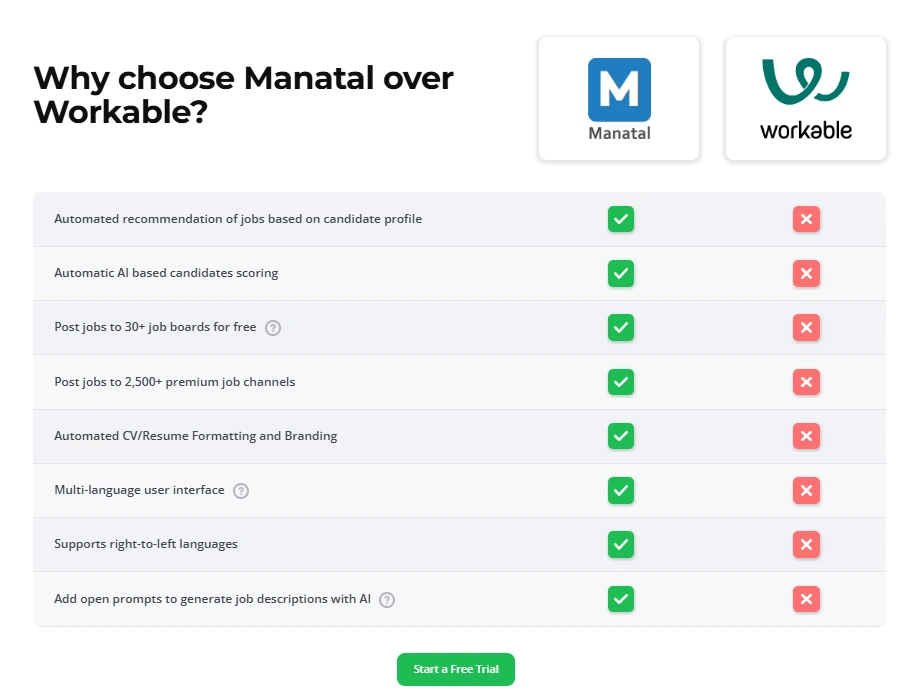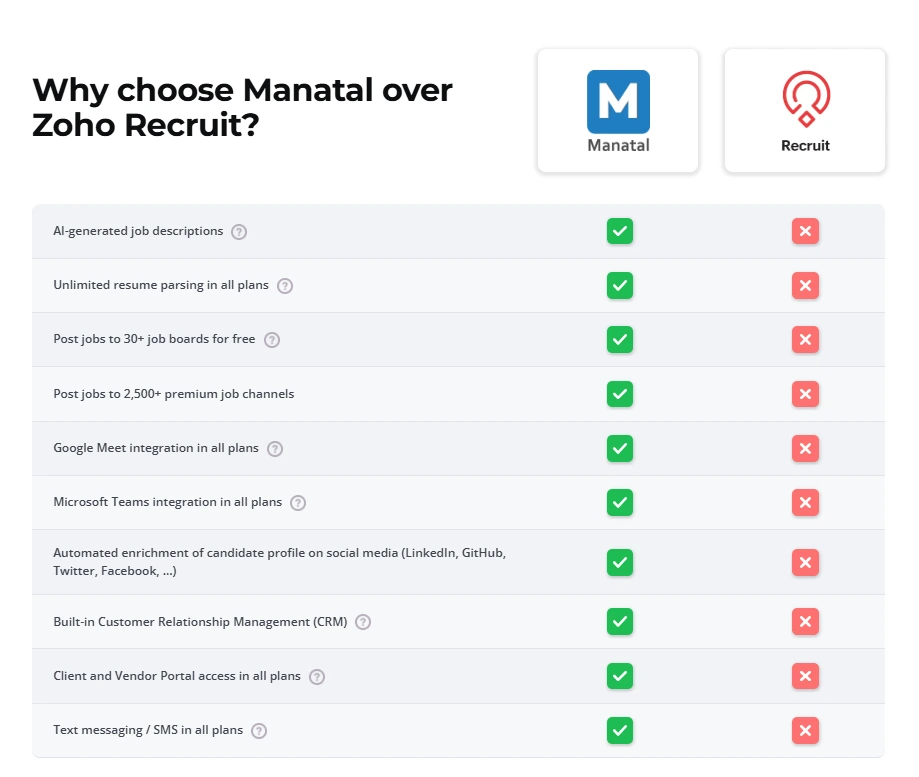Persistent talent shortages, shifting candidate expectations, and economic uncertainty are making recruitment increasingly difficult. In fact, 74% of employers report challenges filling roles, with candidate ghosting cited as a significant issue. Research shows that 44% of job seekers abandon the hiring process without explanation[1]. In this complex landscape, the best ATSs are emerging as essential tools. By automating tasks such as resume parsing, interview scheduling, and communication, these platforms help recruiters regain control and streamline hiring. Notably, 94% of recruiters and hiring professionals report that ATS has improved their processes[2].
This article explores top ATS platforms, their features, and how they address today’s recruitment challenges.
The Best ATS Explained
An ATS is software that automates and simplifies the hiring process, from posting jobs to onboarding candidates. The best ATS platforms help manage applications, track candidate progress, and facilitate communication. Modern ATS tools are equipped with features such as:
- Resume parsing
- Custom hiring pipelines
- Communication tools
- Candidate and client relationship management
- Analytics and reporting
- Integration capabilities
Core Features of the Best ATS Platforms
Here are the key features to consider when selecting the best ATS, explained through practical use cases and benefits.
1. Resume Parsing and Profile Enrichment
How it works: ATS platforms extract information (skills, experience, contact details) from resumes and enrich them using data from public sources like LinkedIn.
Benefit: Saves time and creates structured, enriched candidate profiles.
Best for: Teams handling large volumes of resumes.
2. Custom Recruitment Pipelines
How it works: Drag-and-drop interfaces allow teams to customize hiring stages by role or department.
Benefit: Improves visibility, flexibility, and consistency.
Best for: Organizations with diverse hiring processes.
3. Communication and Collaboration Tools
How it works: ATS platforms sync with email and calendars and enable shared notes, scorecards, and messaging.
Benefit: Centralizes discussions and streamlines interview scheduling.
Best for: Cross-functional hiring teams.
4. Integrated Candidate and Client Management (CRM)
How it works: Tracks both candidate interactions and client requirements.
Benefit: Combines sales and recruitment workflows.
Best for: Recruitment agencies and multi-department organizations.
5. Analytics and Reporting
How it works: Dashboards display metrics like time-to-hire and source effectiveness.
Benefit: Data-driven insights to refine recruitment strategies.
Best for: Teams focused on performance optimization.
6. Enhancing Candidate Experience
How it works: Customizable, mobile-friendly career pages and automated communications.
Benefit: Improves engagement and reduces candidate drop-off.
Best for: Brands conscious of their hiring reputation.
7. Scalability and System Integration
How it works: Supports growth with multiple users and integrates with HRIS and payroll.
Benefit: Future-proof solution that fits into broader HR ecosystems.
Best for: Growing or large organizations.
For recruitment teams aiming to elevate their hiring strategy, Manatal delivers a modern, all-in-one platform designed to simplify and accelerate the end-to-end hiring process. Combining powerful applicant tracking system functionality with built-in recruitment CRM tools, Manatal helps streamline candidate sourcing, pipeline management, and client collaboration, all from a single, intuitive interface. With intelligent automation, AI-powered recommendations, and seamless integration options, it enables teams to reduce time-to-hire and focus more on building quality relationships with both candidates and clients.
{{cta}}
How Does Manatal Compare to Others in the Market
When selecting the right Applicant Tracking System (ATS) for your organization, it's essential to consider various factors, including pricing, features, and user satisfaction. To help you make an informed decision, we've compiled a comparison table of some of the most popular ATS options available today. This table provides an overview of each system's starting price, user ratings from Capterra, and keynotes to highlight what makes each system unique.
Bullhorn
While Manatal clearly mentions its pricing plans, Bullhorn requires prospects to contact their sales representatives, as their product involves multiple plans and additional products that can lead to rapid increases in expenses. From the features side, the software lacks key features found in Manatal, including AI candidate recommendations, scorecards, and more. Additionally, Bullhorn does not provide a free trial, restricting users from exploring the platform before committing.

Workable
Manatal stands out as the better choice for most organizations thanks to its advanced AI-powered features, highly affordable pricing, and exceptional user satisfaction. Starting at just $15 per user per month, Manatal delivers intelligent candidate recommendations, multilingual support, and seamless job board integration, all within an intuitive, user-friendly interface. While Workable is a solid contender, Manatal offers more value and flexibility, especially for teams seeking efficiency and scalability without breaking the budget.

Greenhouse
Greenhouse's pricing is not publicly disclosed and is tailored based on company size and needs, which may lead to higher costs for some organizations. Additionally, Manatal has received positive reviews with high user satisfaction reported on some platforms, reflecting its user-friendly interface and efficient customer support. While Greenhouse is renowned for its scalability and extensive integration options, Manatal's transparent pricing and comprehensive feature set make it a compelling choice for companies seeking an efficient and budget-friendly recruitment solution.

Zoho Recruit
Manatal distinguishes itself with its user-friendly interface, AI-driven candidate recommendations, and cost-effective pricing starting at $15 per user per month. Features such as unlimited resume parsing, social media enrichment, and built-in CRM tools are included in all plans, providing recruiters with a comprehensive toolkit without additional costs. While Zoho Recruit's advanced features are often reserved for its higher-tier plans, Manatal delivers a full-featured experience across all pricing levels, making it an ideal choice for recruiters seeking efficiency and value.

How to Choose the Best ATS
When evaluating the best ATS for your organization, consider the following factors:
- Company size: Choose scalable solutions that match your headcount.
- Hiring volume: Look for robust automation and parsing features.
- Collaboration needs: Prioritize tools with real-time notes and feedback.
- Budget: Compare total cost including add-ons and integration fees.
- Industry-specific needs: Some platforms cater better to agencies vs. in-house teams.
Conclusion
In an increasingly competitive hiring landscape, the significance of an Applicant Tracking System can’t be overstated. Before choosing and implementing an ATS, consider several factors. These include the system's scalability to support your organization’s growth, its integration capabilities with existing HR tools, user-friendliness, and the level of customer support provided. Also, you should assess the specific features that cater to your unique hiring needs, such as customizable workflows, reporting capabilities, and compliance with industry regulations. Remember, thoroughly considering these factors goes a long way.
Frequently Asked Questions
Q: How can an ATS improve the efficiency of the recruitment process?
A: An Applicant Tracking System (ATS) improves recruitment efficiency by automating tasks such as organizing applications, filtering candidates, and scheduling interviews. This system reduces manual effort, enhances data management, and provides valuable analytics, allowing recruitment teams to focus on engaging with top talent and making informed hiring decisions, resulting in faster and more effective recruitment processes.
Q: How can organizations measure the success of their ATS implementation?
A: Organizations can evaluate the success of their Applicant Tracking System (ATS) by measuring key performance indicators such as time-to-hire, candidate quality and satisfaction, and user adoption rates. Feedback from recruiters and hiring managers, cost-per-hire analysis, integration with other HR systems, and the overall return on investment are also essential in determining the system's effectiveness and long-term benefits.
Q: How can an ATS support diversity and inclusion in recruitment?
A: An ATS enhances diversity and inclusion in recruitment by removing bias and focusing on candidate skills through anonymized applications. It provides analytics to monitor applicant pool diversity and highlights biased language in job descriptions. By promoting inclusive job postings and reaching diverse audiences, an ATS supports the creation of a more diverse and inclusive workplace.
Q: What are the best practices for optimizing job descriptions within an ATS?
A: To optimize job descriptions for an Applicant Tracking System (ATS), use clear, concise, and keyword-rich language that highlights essential skills and qualifications. Avoid jargon and complex phrases, and structure the description with defined sections like job title, responsibilities, qualifications, and company culture. Utilize bullet points for clarity and readability, and use inclusive language to attract a diverse range of candidates.
Q: What role does artificial intelligence (AI) play in modern applicant tracking systems?
A: AI is essential in modern applicant tracking systems as it streamlines recruitment by efficiently analyzing resumes, reducing human biases, and improving candidate engagement through chatbots. It also aids in making data-driven hiring decisions with predictive analytics, thus enhancing efficiency, accuracy, and fairness in the recruitment process.
Citations





.png)






















.webp)

.webp)

.webp)
